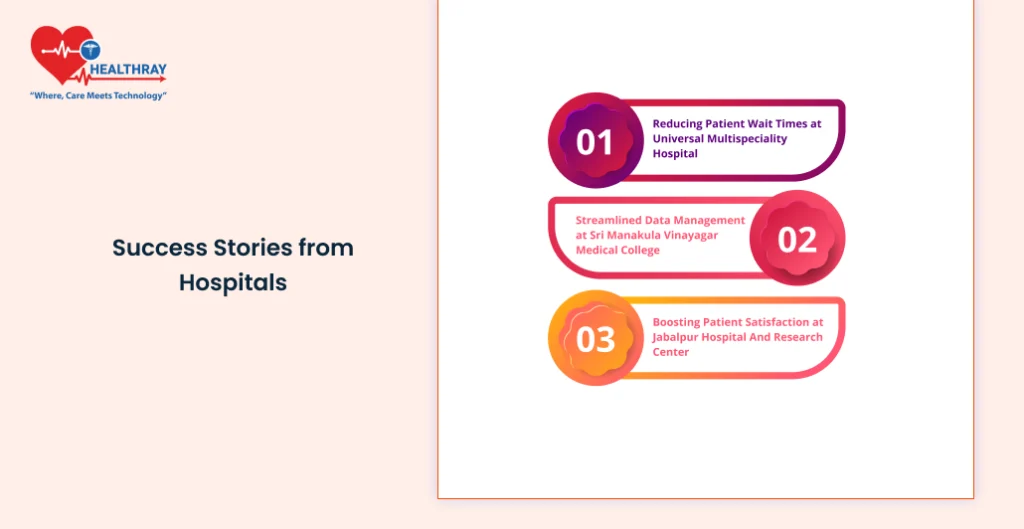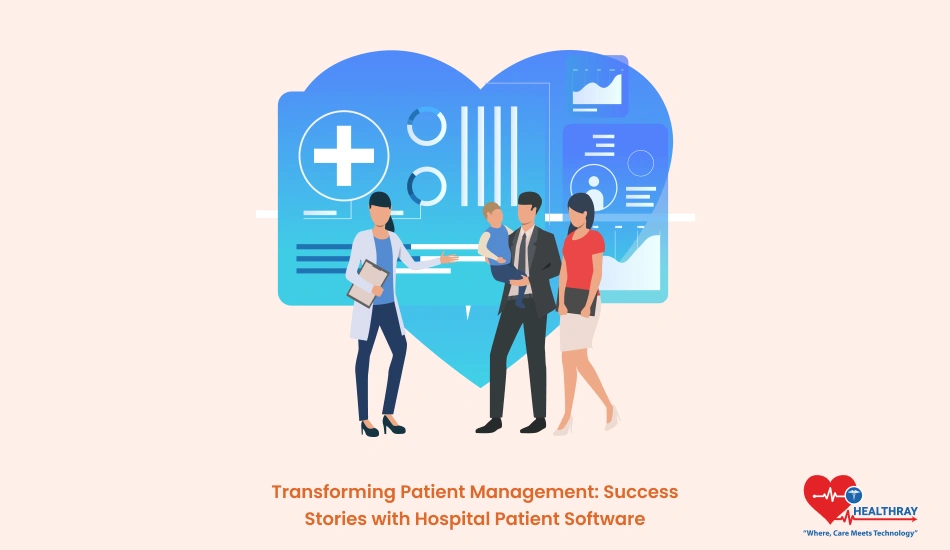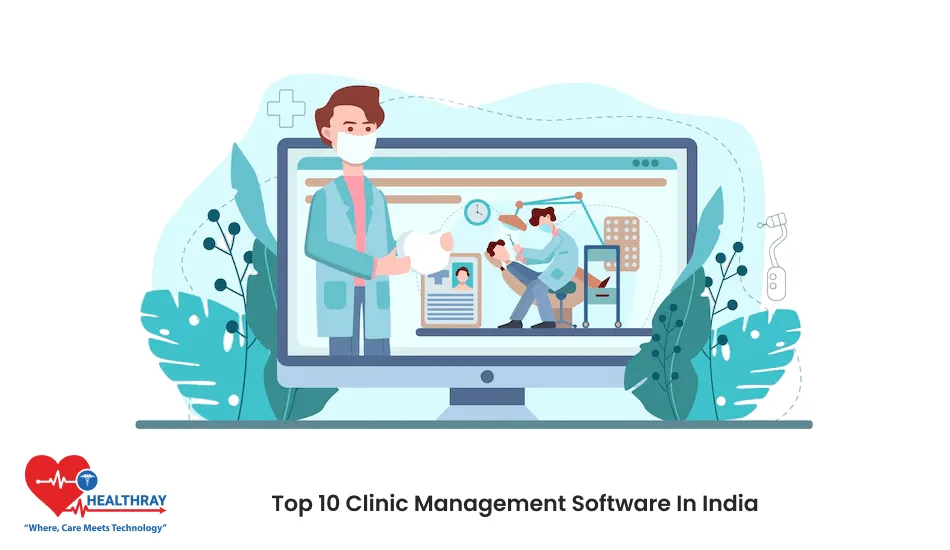Introduction
Patient care is considered one of the hardest tasks in health care at present. As a result, numerous hospital administrators and health IT experts, as well as clinic managers, seek an application that would make their work easier in reducing patients’ waiting time so that better care may be provided to the patients. And in this respect, the HMIS and patient management software make a valuable impact.
But why? With the implementation of Hospital Management System, the hospitals have undergone tremendous changes from managing patient care to proper data management and efficient operations. Now, this article further covers real success stories that reveal how software solutions like these have played game changers for hospitals and clinics in their programs. However, let’s begin with the patient management software.
What is Patient Management Software?
Patient management software is not only a tool but an all-inclusive system that makes order out of the complexity of healthcare administration. Custom-designed for hospitals, clinics, and other healthcare facilities, the systems currently implemented in these institutions streamline everything from intake to discharge but also improve communication as well as data handling.
Key features include:
This will also simplify registration and scheduling for patients so that wait times decrease and make schedules much better.
- Data and record management: This allows maintaining histories, plans for treatment, and continuing care to be carried out safely in an orderly way.
- Billing and insurance processing: The billing system can be quite simpler with these integration processes connected with insurance claims and will effortlessly have payments by the patients as well as employees within the hospital.
- Communication Tools: This will ensure safe messaging between patients and providers that will enhance coordination of care, reduce errors.
These software solutions are integrated, hence are not independent. Integration happens with other systems as well; other examples include electronic health records (EHR), medical billing, and laboratory and imaging systems as well. The bottom line will be an approach toward patient care management that is more cogent, as well as operational workflows.
Success Stories from Hospitals

Success in healthcare, therefore depends not only on the state-of-the-art treatment but also on well-run operations to support such quality care. Below are some hospital examples of places that have made dramatic transformations by implementing patient management software:
Case Study 1: Patient Waiting Time at Universal Multispeciality Hospital
The common problem was the long waiting time of the patients, specifically the emergency room. There was a heavy volume of admissions and few staff and beds. They had to find a balance in having fewer staff and beds in comparison to a large number of admissions, thereby requiring a proper management system for better patient flow.
The software made scheduling of appointments better, triage alerts were automatically sent to the caregivers, and the location of patients inside the hospital was monitored in real-time. One year after this system was implemented, Greenfield reported a 20 percent drop in average wait time and further significant improvements in patient satisfaction scores. The staff found the new system intuitive and very easy to migrate to, which also improved the workflow.
Case Study 2: Data Smooth Workflow Management at Sri Manakula Vinayagar Medical College
Managing the information of all patients was an enormous task at Lakeside Regional. It was not efficient and very prone to mistakes with numerous systems and paper floats around. Lakeside instituted a patient management software system which housed all patient information in an electronic platform. It saved much time because doctors and nurses immediately accessed the histories of their patients at present, saving them from redoing their papers.
Transfer support ensured that Lakeside reduced its administrative workload by 30%. This way, it has been able to have more time spent directly on direct patient care. The physicians and nurses having ready access to information about patients have also reported a decrease in the number of errors related to medicine and treatment.
Case Study 3: Increase Patient Satisfaction at Jabalpur Hospital And Research Center
Riverside Health Clinic was greatly interested in making the process of scheduling appointments and billing friendlier to its patients. Patient management software including billing systems, the facility went ahead to adopt online appointment scheduling and follow-up reminders. This enabled patients to make reschedule or cancel appointments without holding since the patient received clear summations of their bills after each visit.
Impact Evaluation
Actual success has to do with the relevant outcomes, and hospital management software often delivers what that is. A hospital might employ such a system to make the running of its operations more efficient, decrease errors from happening, and increase satisfaction regarding patients. Let’s look at some key metrics showing just how transformative these solutions can be in efficiency and wait time reductions.
According to most hospitals, patient management software has indeed contributed to reduced wait times in patients. In the case of Greenfield General Hospital, 20% less comparative waiting time meant fewer stays in the ER, and less bottlenecking while processing patients. Automating tasks such as scheduling appointments and tracking patient flow, they say, cuts down much administrative time spent in hospitals to give more time to employees to spend with their front-line patients.
Improved accuracy in data management.
Upgrading the data management increases the quality of care. At Lakeside Regional, administrative tasks reduced by 30% after switching to a consolidated digital platform. This heightened productivity naturally lowered the possibility of error-prone cases occurring because of the manual processing of patient information and also reduced time required for record locators. Besides enhancing workflow, it maximizes the possibility of delivering the right diagnosis and treatment by improving data accuracy.
Better Quality of Care
This brings about a better quality of care through upgradation in the process of data management. For instance, consolidation onto one electronic platform increased Lakeside Regional’s administrative efficiency by 30 percent. Since the opportunities of incidents prone to error through manually processing patient information became reduced and more time did not need to be spent for locating records, productivity improved significantly and the chances for providing wrong diagnoses and wrong treatment became decreased, as chances for the correctness of data get maximized.
Cost Benefits
Any hospital would always find the cost of a new technology to be important. New technology in a health facility is always costly, but when it comes to patient management software, the implementation costs are pricey, but the saving is long-term. The saving for the hospital comes in administrative labor costs, paper use, and redundancy of patient’s records. In real sense, the facilities optimize these areas and save through the avoidance of cost incurred by errors, missing appointments, and inefficient billing processes.
Implementation Challenges
Implementation of patient management software does not come easy while having many obvious benefits. Integration challenges often pose a significant barrier- especially if the software will be integrated into already existing systems and is coupled with intensive training becoming a highly critical area-wherein best of software would go waste if not taught to the staff-the majority of hospitals say that initial difficulties are compensated by the end improvements in efficiency and patient care.
Comparing Software Solutions

As discussed earlier, each patient management software has features and benefits uniquely different from another. With all these options at hand, one may feel like getting lost. However, in order to provide a better comprehension, here’s a look at some of the top software options, their strength, and type of healthcare facility they will best serve.
Healthray Technologies
Healthray Technologies: This is very good electronic health record integration with the flexibility of a module in it, which is available for larger health systems and hospitals. It includes all the functionalities of patient management, such as scheduling patients, following track of patients, and billing in one system.
Best suited for: Large hospitals and multi-specialty health systems
EHR, real time patient tracking with real-time billing and scheduling.
Pros: Offers better data security because modules are developed based on requirements and allows for smooth data transfer
Considerations: Higher installation charges and staff needs more training session
Bigscal Technologies
Bigscal technologies are most popular for its wide-ranging EHR solution and the capabilities in the management of the patient, big scaling up to the big healthcare provider networks. It has appointment scheduling feature, patient record management, and the facility for billing and a patient portal by which a patient can access his records, including interaction with providers.
Best For: Large hospitals and integrated health networks.
Key Features: EHR integration, patient portals, appointment scheduling, telehealth integration.
Pros: Scalability is excellent. The engagement of patients is good through portals.
Cons: The high upfront cost and more time-consuming implementation
EMRSoftware.AI
EMRSoftware.AI presents patient-centered ways of conducting the patient’s data management through its features such as a real-time tracking, scheduling, and billing integration. It is suitable for medical facilities that place much emphasis on data accessibility and the participation of patients.
Best For: Hospitals or an outpatient facility that has a medium to a large capacity.
Key Features: Real-time data; billing integration; engages patient options.
Pros: Easy to use interface, engages patients
Considerations: May require add-ons for certain hospital needs.
Choosing the Best Solution
The best software will be determined by the specific needs and scale of each facility. For instance, big hospitals would require highly complex functions with high scalability; hence, it is quite reasonable for them to opt for Bigscal Technologies or Healthray Technologies. Smaller clinics prefer EMRSoftware.AI because it has easy setup and a cloud-based platform. It depends on the budget for costs or sum that is going to be allocated, amount of integration, and capacity of the facility to support training or onboarding.
Conclusion
It is not the rise of technology, though. Rather, it is even a patient-centered setting for healthcare that is more efficient. Then, there are advantages that go along with a hospital management system as well as patient management software. This includes less time waited and increased data accuracy. There is streamlined workflow, reduced administrative burdens, and most importantly, better care to the patients-fruit of an investment that should be made by hospitals and clinics in the right solution.
The successes and lessons highlighted here point to the need for facility-based customized integration. It is absolutely not a one-size-fits-all affair. Facilities have to decide based on their needs-be it compatibility with their existing systems, scalability, or whatever it may be. Hard proofs and illustrations depict how proper software, along with proper implementation, can make all the difference. Engagement with stakeholders, training, and performance monitoring proved to be critically important to really harness the power of this technology.
This can clear paths for hospital administrators, healthcare IT professionals, and clinic managers to the way of operational excellence and better patient experiences. By having more facilities embrace these tools, this has continued to boost the positive influence both on staff efficiency and on the satisfaction of patients.





